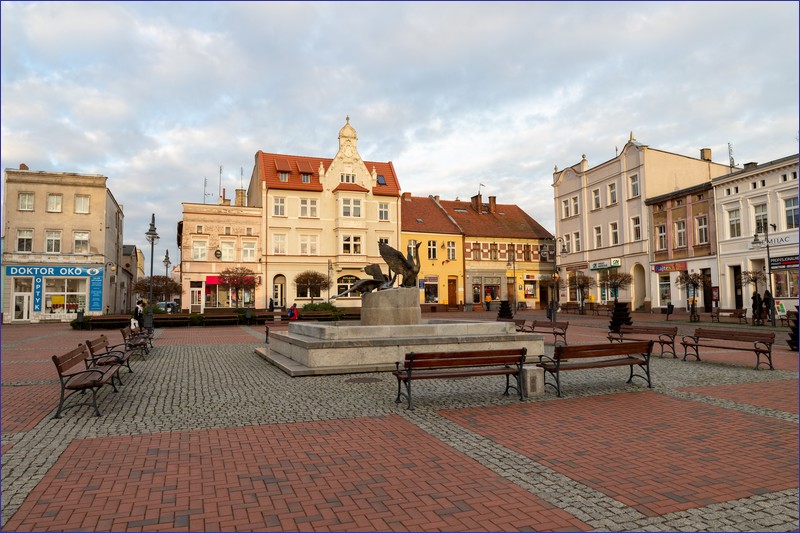Bydgoszcz is a large city in Poland and an important railway junction. The city is a popular destination for cheap flights from the UK but some people visit this city during railway trips around Poland. Bydgoszcz is also a very good starting point for one-day trips by train to many interesting Polish cities and towns. There are some proposals – I’ve included the most important ones that can be reached by regional trains within two hours, counting from the first to the last station within the borders of Bydgoszcz and the destination. Sometimes it is recommended to take a fast train operated by PKP Intercity (tickets are more expensive).
Day trips from Bydgoszcz by train – direction Toruń
Toruń – one of the most beautiful cities in Poland. A must-visit place due to its very well-preserved Old Town. From the main railway station, it’s a bit of a walk, but the Toruń Miasto station is closer. Beautiful buildings, picturesque alleys, interesting spots – in short, you can spend hours strolling through Toruń’s city center. The heart of the city is the Old Town Market Square with its impressive Town Hall (which has an accessible viewing tower). The most important landmarks include the Church of St. John the Baptist and St. John the Evangelist, the Gothic parish church of St. James, the former Franciscan monastery, and the Leaning Tower – a medieval defensive tower tilted 1.4 meters from vertical; one of nine surviving towers. As for museums, notable ones include the Nicolaus Copernicus House, the Tony Halik Travelers’ Museum, the Toruń Gingerbread Museum, and the Living Gingerbread Museum. The Museum of the Toruń Fortress is housed in the former Chełmno Gate Barracks building, near the bus station. In the summer season, you can also take boat trips on the Vistula River.
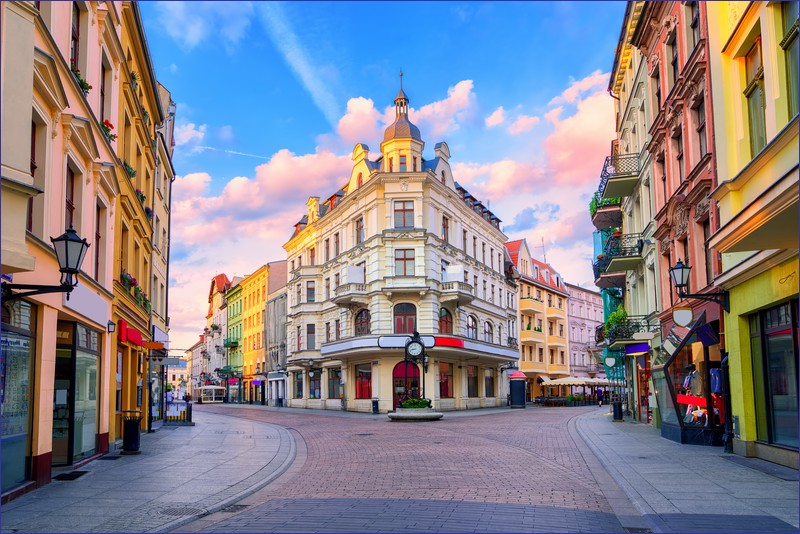
Direction – Poznań
Destinations in Greater Poland are very popular day trips by train from Toruń. Poznań is a must-see if you visit Poland, Gniezno is very important city for Polish history. If you travel from Bydgoszcz to Poznań it is recommended to take a fast train.
Inowrocław (optional) – a spa town, not particularly remarkable in terms of city center architecture. If you decide to visit Inowrocław, you should take advantage of the two saline parks and the local thermal baths. The distance from the train station to the parks is quite considerable. It’s also worth noting the walls of the Church of the Blessed Virgin Mary (built between 1180 and the early 13th century), where mysterious masks and images of beasts can be painted or carved.
Gniezno – the first capital of Poland, with numerous religious monuments, the most important of which is the cathedral with a viewing tower open to the public. It’s also worth visiting the Museum of the Origins of the Polish State. A recently established “rabbit trail” guides visitors between main attractions in the city centre. Railway enthusiasts should visit the local roundhouse, and during summer season, on weekends, you can take a ride on the short route that remains from the once-thriving Gniezno Narrow-Gauge Railway. The city center and major attractions are within walking distance from the train station.
Pobiedziska (optional) – there are several interesting tourist attractions for everyone not far from the renovated railway station. The most important attraction is the Miniature Park in Pobiedziska, featuring miniature replicas of characteristic buildings from Greater Poland. Families with children enjoy spending time in the wooden settlement, where you can visit an exhibition of full-scale medieval siege machines, an armory, and a shooting range, and enjoy outdoor games.
From the stations Kocanowo and Fałkowo, located between Pobiedziska and Gniezno, you can walk or cycle to the open-air museum in Dziekanowice and Lake Lednica.
Poznań – the capital of the Greater Poland region, offering many interesting attractions. The main train station, Poznań Główny, is located close to the city center and its main sights. A one-day sightseeing plan can include a walk from the main station to the Old Town Square (one way via the bus terminal, and the return via Święty Marcin Street; with a stop at the Stary Browar shopping and arts center along the way), a visit to the Collegiate Basilica near the market square with its beautiful interiors, followed by a trip to Ostrów Tumski (featuring the cathedral and the famous 3D mural in the Śródka neighborhood), and optionally a walk by Lake Malta. In the high season, you can also ride the narrow-gauge Maltanka train, operated by MPK Poznań.
If you have enough time, you can visit one of the many museums in the city center. Currently, the most popular is Brama Poznania, which features archaeological exhibits. The Enigma Cipher Center on Święty Marcin Street is especially popular among young people, while adults can choose from several branches of the National Museum in Poznań, depending on their interests.
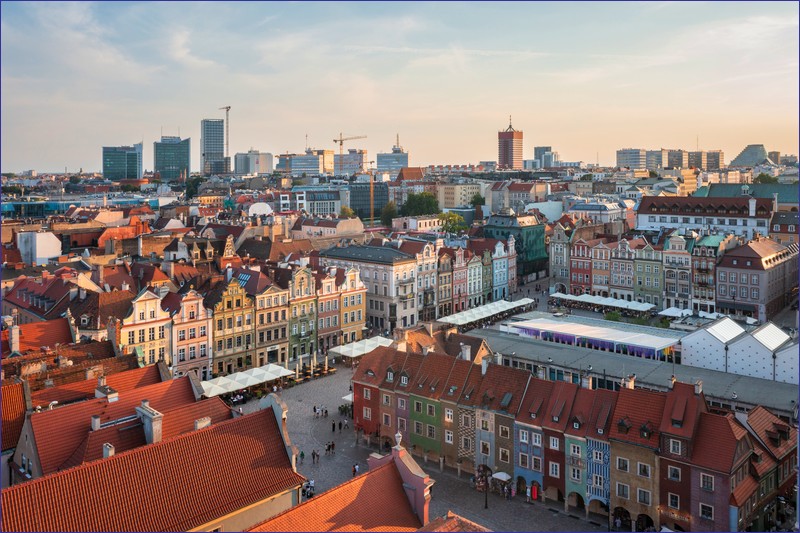
Direction Grudziądz and Chełmża or Kwidzyn
Ostromecko – located on the right bank of the Vistula River, just 3 kilometers from Bydgoszcz, is Ostromecko with its nice palace and park. The complex consists of two palaces and a park. The older palace, built in the Rococo style, dates back to around 1730 and once belonged to Castellan Bogdan Mostowski. Due to debts, it passed into the hands of the Schoenborn family. The second palace was built in the Classicist style between 1832 and 1848. According to legend, a horse with a golden jaw is buried in the park.
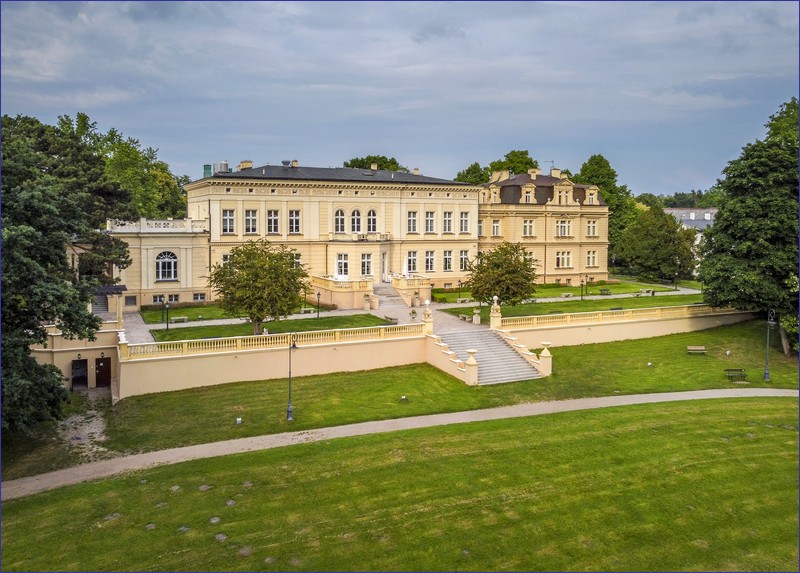
Grudziądz (optional) – a somewhat depressing and neglected city, but worth visiting for its historical monuments and tram network. The most important landmarks are the ensemble of historic granaries located on the Vistula escarpment. These granaries, which form a beautiful panorama, were repeatedly damaged by fires and wars over the centuries. The oldest dates back to 1346–1351. Today, they house the Fr. Władysław Łęga Museum. Branches of the museum are also located in the former Benedictine Abbey complex and in the Klimek Tower — a remnant of the old castle, now adapted as a viewing tower. A portion of the old city walls has been preserved. Among religious buildings, the Church of St. Nicholas, the Jesuit College, and the Church of St. Francis Xavier are notable.
You can continue your journey from Grudziadz to Chełmża (sometimes you need to change trains) or Kwidzyn (you need to change trains).
Chełmża (optional) – a neglected town, known for its lake, which in the summer attracts residents of the Kuyavian-Pomeranian Voivodeship looking to relax. The lake, which is 6 kilometers long and covers an area of 300 hectares, reaches a depth of 27 meters. You can rent water sports equipment or take a walk along a 360-meter-long wooden pier built in 2014. The historic sites are spread over a small area. The heart of the town is the market square, where the town hall stands — built between 1897 and 1900 on the site of a former tenement house. The most valuable religious monument is the Co-Cathedral Basilica of the Holy Trinity, constructed between 1251 and 1359, and visited many times by Polish kings. Right next to the co-cathedral is a 14th-century stone gate. Also worth noting is the Gothic Church of St. Nicholas, dating back to the mid-13th century.
Kwidzyn – the city’s landmark is the Castle of the Pomesanian Chapter, probably built between 1320 and 1345. The castle now hosts a branch of the Malbork Castle Museum. The castle is connected to a cathedral, which can be toured with a guide (reviews are mixed). Among the historic buildings, the railway station building is also worth mentioning.
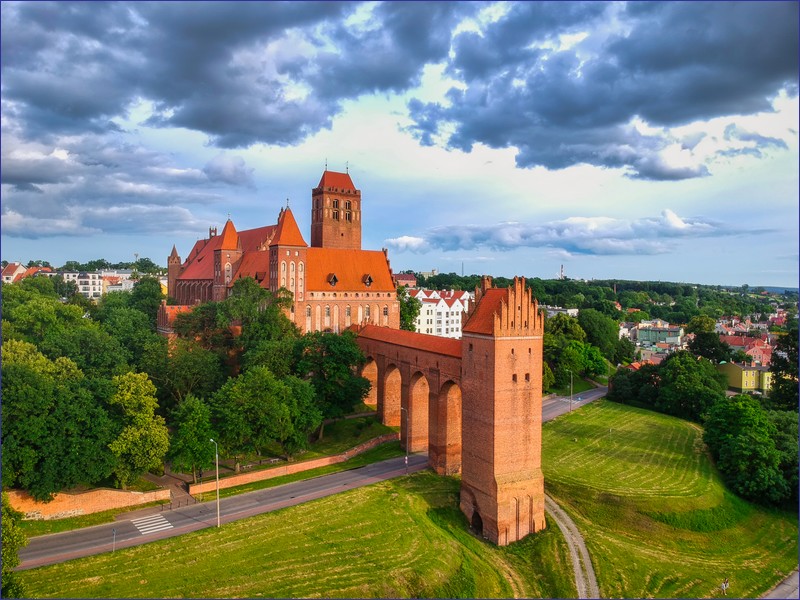
Direction Chojnice
Tuchola (optional) – a calm town located by a lake. There’s not much to see in Tuchola itself apart from the town square, but the city serves as a good base for hiking trips in the Tuchola Forest. The town also has a small Tuchola Forest Museum.
Chojnice – a lesser-known city with a charming town center located about one and a half kilometers from the train station. Some building façades feature decorative plant and animal motifs. The Historical and Ethnographic Museum is housed in the Człuchów Gate and a few other remaining elements of the old fortifications. Among the religious monuments, the most notable are the Basilica of the Beheading of St. John the Baptist, built in the mid-14th century, and the neighboring Church of the Annunciation of the Blessed Virgin Mary. In the summer, a local bus can take you to Lake Charzykowskie.
Just fifteen minutes away by bus or train (though there are very few trains) lies Człuchów. You can stop by briefly to visit the Regional Museum located in the remnants of the old castle or relax by the lake.
Related articles:
Train travel in Poland – a comprehensive guide
